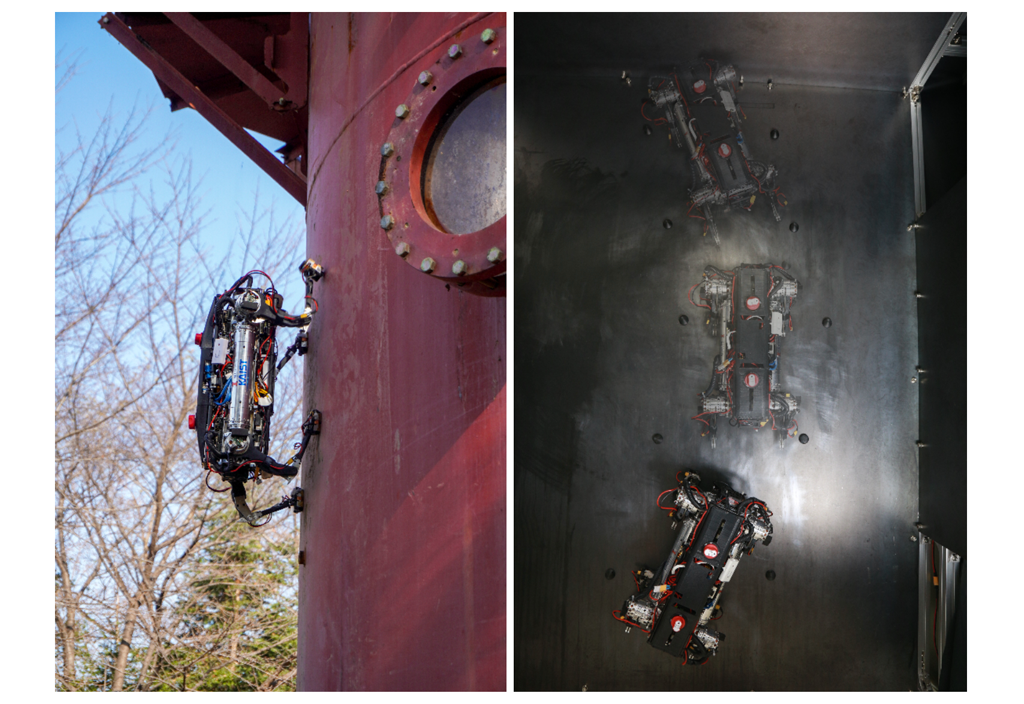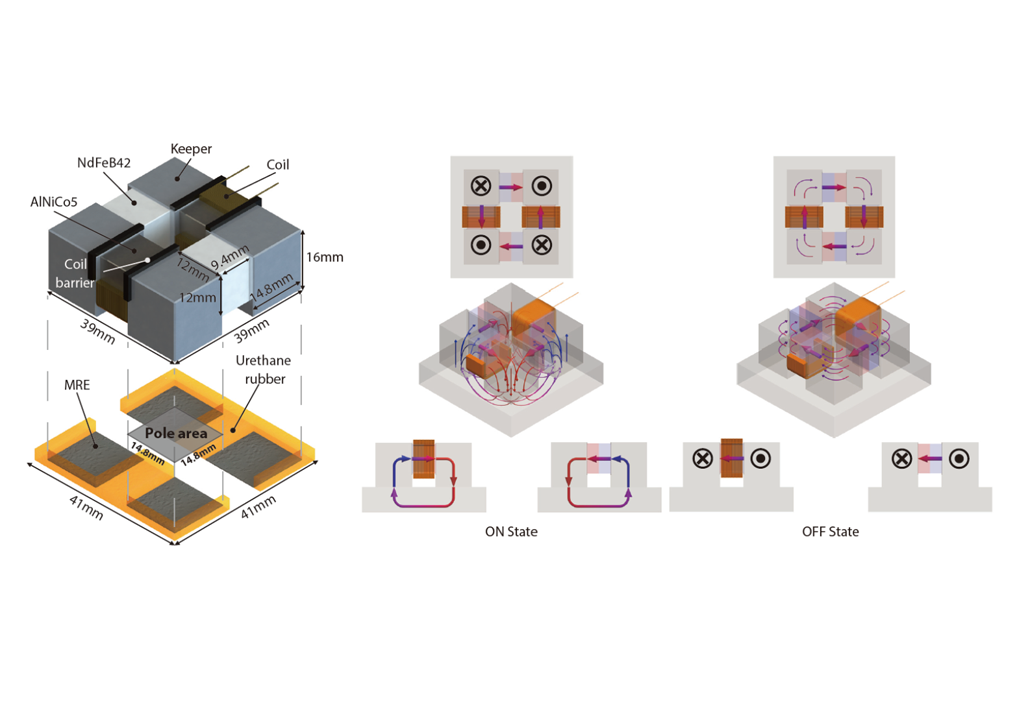Researchers at the Korea Advanced Institute of Science and Technology (KAIST) have developed a quadrupedal robot that can walk on steel walls and ceilings. MARVEL (Magnetically Adhesive Robot for Versatile and Expeditious Locomotion), the robot, is equipped with a foot sole that can quickly turn the magnetic adhesive force on and off while retaining high adhesive force even on uneven surfaces. The research team’s work has been published as the cover paper of the December 2022 issue of Science Robotics.
The KAIST research team led by Professor Hae-Won Park of the Department of Mechanical Engineering developed MARVEL with the goal of creating a robot that could perform inspections, repairs, and maintenance tasks on large steel structures such as ships, bridges, transmission towers, oil pipelines, and construction sites. These tasks are often risky and can lead to serious injuries or casualties, so automation is urgently needed.
The foot sole of the MARVEL robot uses an Electro-Permanent Magnet (EPM), a device that can turn the electromagnetic force on and off with little power, and a Magneto-Rheological Elastomer (MRE), an elastic material made by mixing a magnetic response factor such as iron powder with an elastic material such as rubber. The sole weighs only 169 g, but provides a vertical gripping force of about 535 Newtons (N) and a frictional force of 445 N, which is sufficient gripping force for a quadrupedal robot weighing 8 kg.
The EPM is a magnet that can turn on and off the electromagnetic force with a short current pulse. It has the advantage that it does not require energy to maintain magnetic force. The research team proposed a new EPM with a rectangular structure arrangement, enabling faster switching while significantly lowering the voltage required for switching compared to existing EPMs.
The research team was able to increase the frictional force without significantly reducing the magnetic force of the sole by covering the sole with an MRE. This allows the robot to climb a vertical wall at a high speed of up to 70 cm per second and walk while hanging upside down from the ceiling at a maximum speed of 50 cm per second, which are world’s fastest speeds for a walking climbing robot.
Additionally, the robot can climb at a speed of up to 35 cm even on surfaces that are painted, dirty with dust, and rust-covered, such as water tanks, proving the robot’s performance in real environments. The robot not only exhibits high speed but can also switch from floor to wall and from wall to ceiling, and overcome 5-cm high obstacles protruding from walls without difficulty.
One of the first co-authors of the paper, Ph.D. student Yong Um of KAIST’s Department of Mechanical Engineering, said, “By the use of the magnetic soles made up of the EPM and MRE and the non-linear model predictive controller suitable for climbing, the robot can speedily move through a variety of ferromagnetic surfaces including walls and ceilings, not just level grounds. We believe this would become a cornerstone that will expand the mobility and the places of legged robots can venture into.”
The MARVEL robot has significant potential for inspection and maintenance in a wide range of industrial settings, from shipbuilding to oil pipelines and beyond. The development of this robot could revolutionize the inspection and maintenance industry, as robots like MARVEL can perform tasks faster, more accurately, and without risk of injury to human workers.
This work was supported by the Korea Shipbuilding & Offshore Engineering (KSOE), the National Research Foundation of Korea (NRF) (NRF-2022R1A2C2011927), and the Department of Mechanical Engineering, Korea Advanced Institute of Science and Technology (KAIST).


Prof. Hae-Won Park
Ph. D. Candidate. Yong Um
Dr. Seungwoo Hong
Dr. Jaejun Park
Dept. of Mechanical Engineering, KAIST
E-mail: yongum@kaist.ac.kr
Homepage: https://www.dynamicrobot.kaist.ac.kr






